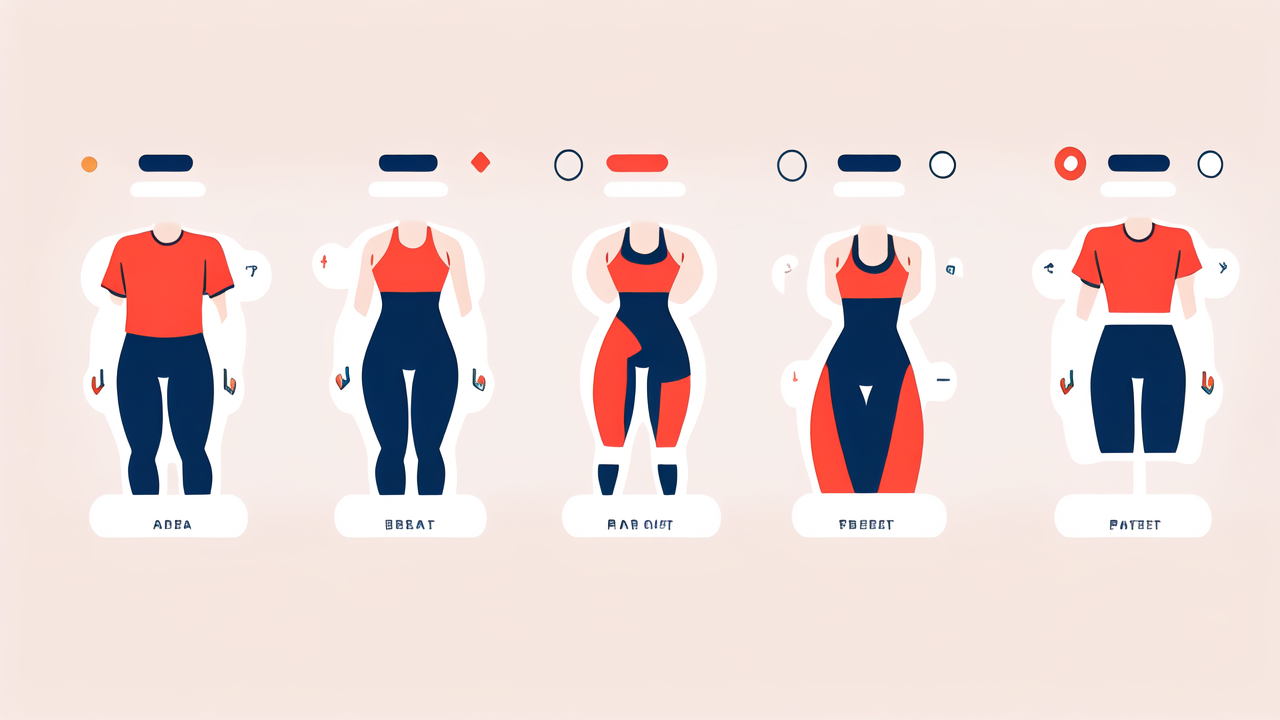Understanding the Importance of Body Measurement Tracking for Athletes
The Role of Measurement in Achieving Fitness Goals
Body measurement tracking plays a crucial role in achieving fitness goals. It provides tangible data to monitor progress. Athletes can use this info to adjust their training plans. Tracking helps identify areas that need more work. It also shows which parts of the body are responding well to exercise.

Measurements can boost motivation by showing small changes over time. They offer a clear picture of how the body is changing. This is especially helpful when weight alone doesn't tell the whole story. For example, muscle gain might offset fat loss on the scale. But measurements will show changes in body composition.
Evaluating Your Progress with Accurate Measurements
Accurate measurements are key to evaluating progress effectively. They provide a baseline to compare future results. Regular tracking helps athletes see trends in their body changes. This info can guide decisions about diet and exercise routines.
Measurements can reveal progress that might not be visible in the mirror. They offer objective data, free from personal bias. This is crucial for maintaining motivation during plateaus. Accurate tracking also helps prevent overtraining by showing when the body needs rest.
It's important to measure consistently for best results. Use the same method and time of day for each measurement. This ensures that comparisons are valid and meaningful.
The Top Body Measurement Trackers on the Market
Advanced Features of Leading Trackers
Leading body measurement trackers offer a range of advanced features. Many use 3D scanning technology for precise measurements. Some trackers can measure body fat percentage and muscle mass. Others track hydration levels and metabolic rate.

Advanced trackers often sync with smartphone apps. This allows for easy data storage and analysis. Some offer progress photos to visually track changes. AI-powered trackers can provide personalized fitness advice based on your data.
Wearable trackers can monitor activity levels and sleep patterns. These features give a more complete picture of overall health. Some high-end models even offer DNA testing for personalized fitness plans.
How to Choose a Tracker That Meets Your Needs
Choosing the right tracker depends on your specific fitness goals. Consider what measurements are most important to you. If you're focused on weight loss, look for a tracker with body fat analysis. For muscle building, choose one that measures muscle mass.
Think about how often you'll use the tracker. If you want daily tracking, a wearable device might be best. For less frequent measurements, a standalone scanner could work well. Consider ease of use and how the data is presented.
Check if the tracker integrates with other fitness apps you use. This can help streamline your fitness tracking process. Also, consider the accuracy of the tracker. Look for models with good reviews and proven reliability.
Comparing Price Points and Specifications
Body measurement trackers come in a wide range of prices. Basic models start around $50, while advanced trackers can cost over $500. Consider your budget and how much you're willing to invest in tracking.
Lower-priced trackers often focus on basic measurements like weight and body fat. Mid-range options might include more detailed body composition analysis. High-end trackers offer the most features and highest accuracy.
Compare the specifications of different models. Look at what measurements each tracker provides. Check the accuracy ratings and any clinical studies backing their claims. Consider battery life for wearable trackers and compatibility with your devices.
Some trackers require ongoing subscriptions for full feature access. Factor this into your budget when comparing options. Remember, the most expensive tracker isn't always the best for your needs.
Implementing Tracking into Your Training Regimen
Integrating Measurement Tracking with Training Plans
To get the most from your tracker, integrate it with your training plan. Set specific, measurable goals based on your tracker's data. Use these goals to guide your workout and nutrition choices.

Schedule regular measurement sessions. Weekly or bi-weekly checks can show progress without obsessing over daily fluctuations. Align your measurement schedule with your training cycles.
Use your tracker's data to adjust your training intensity. If measurements show you're losing muscle, you might need to increase protein intake. If fat loss stalls, consider changing up your cardio routine.
Many trackers offer features to help plan workouts. Take advantage of these to create a cohesive training program. Some can suggest exercises based on your measurement data and goals.
Best Practices for Monitoring Progress
Consistency is key when monitoring progress. Take measurements at the same time of day, preferably in the morning. Wear similar clothing each time to ensure accuracy.
Don't get discouraged by small fluctuations. Body measurements can vary day to day. Look for trends over weeks or months instead. Celebrate small victories along the way to stay motivated.
Use multiple metrics to gauge progress. Don't rely solely on weight or a single measurement. Look at the overall picture your tracker provides. This gives a more accurate view of your fitness journey.
Keep a journal alongside your tracker data. Note how you feel, your energy levels, and workout performance. This adds context to your measurements and can help identify patterns.
Analyzing Measurement Data to Refine Training Efforts
Regularly review your measurement data to refine your training. Look for patterns in how your body responds to different workouts. Use this info to optimize your exercise routine.
If certain measurements aren't changing as expected, reassess your approach. You might need to adjust your diet, increase workout intensity, or try new exercises. Your tracker's data can guide these decisions.
Compare your progress to your initial goals. Are you on track, or do you need to adjust your expectations? Use your data to set realistic, achievable targets. This helps maintain motivation and progress.
Consider sharing your data with a trainer or nutritionist. They can provide expert insights on how to interpret and use your measurements. This can lead to more effective training and faster results.
Remember, tracking is a tool to enhance your fitness journey. Use it to inform your choices, but don't let it control your life. Balance data-driven decisions with listening to your body and enjoying your workouts.




Leave a comment
This site is protected by hCaptcha and the hCaptcha Privacy Policy and Terms of Service apply.